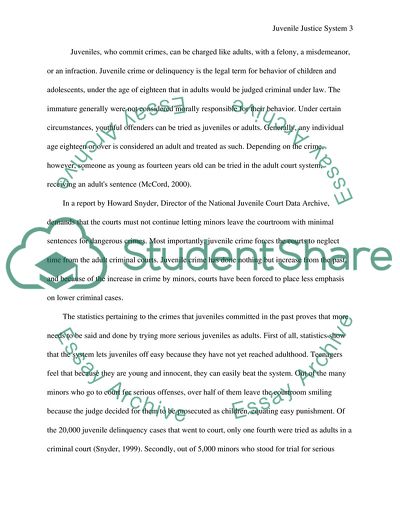Cite this document
(The Success and Failures of Juvenile Justice System Coursework Example | Topics and Well Written Essays - 1500 words, n.d.)
The Success and Failures of Juvenile Justice System Coursework Example | Topics and Well Written Essays - 1500 words. https://studentshare.org/law/1712847-department-of-juvenile-justice-success-failure
The Success and Failures of Juvenile Justice System Coursework Example | Topics and Well Written Essays - 1500 words. https://studentshare.org/law/1712847-department-of-juvenile-justice-success-failure
(The Success and Failures of Juvenile Justice System Coursework Example | Topics and Well Written Essays - 1500 Words)
The Success and Failures of Juvenile Justice System Coursework Example | Topics and Well Written Essays - 1500 Words. https://studentshare.org/law/1712847-department-of-juvenile-justice-success-failure.
The Success and Failures of Juvenile Justice System Coursework Example | Topics and Well Written Essays - 1500 Words. https://studentshare.org/law/1712847-department-of-juvenile-justice-success-failure.
“The Success and Failures of Juvenile Justice System Coursework Example | Topics and Well Written Essays - 1500 Words”. https://studentshare.org/law/1712847-department-of-juvenile-justice-success-failure.


